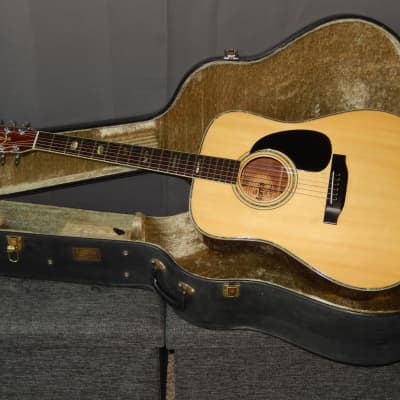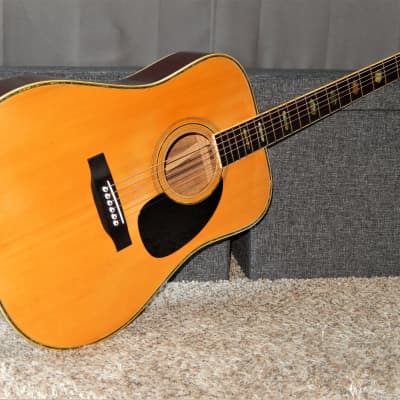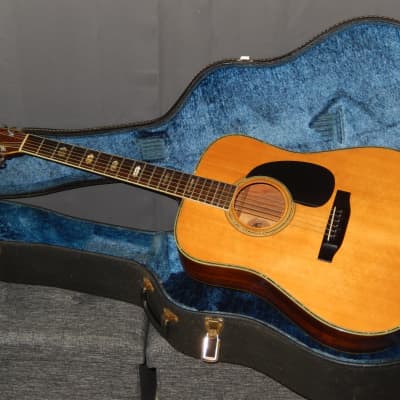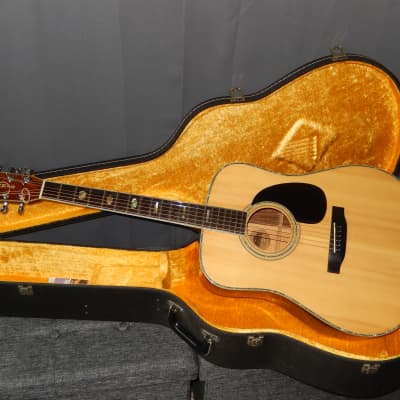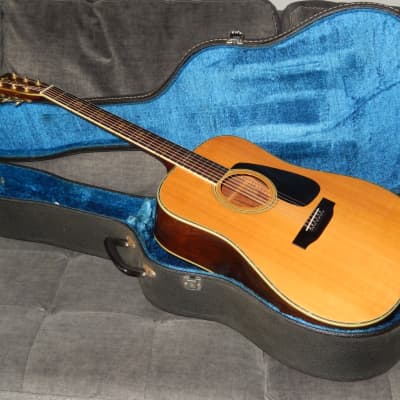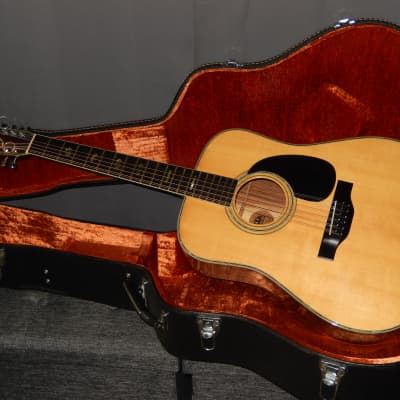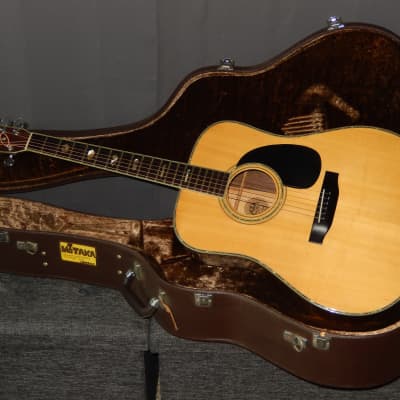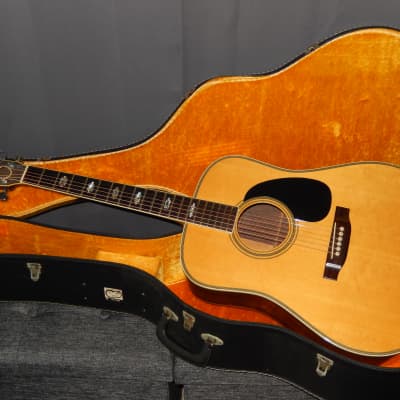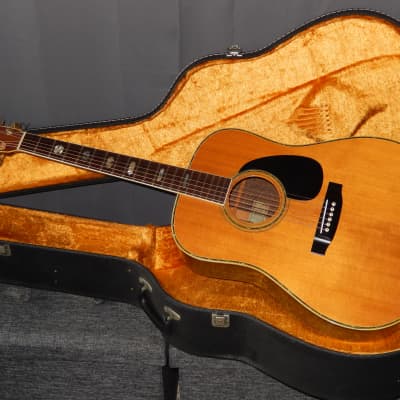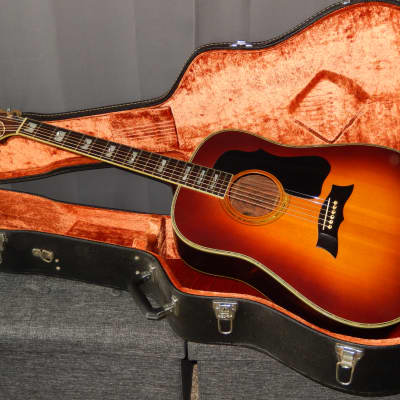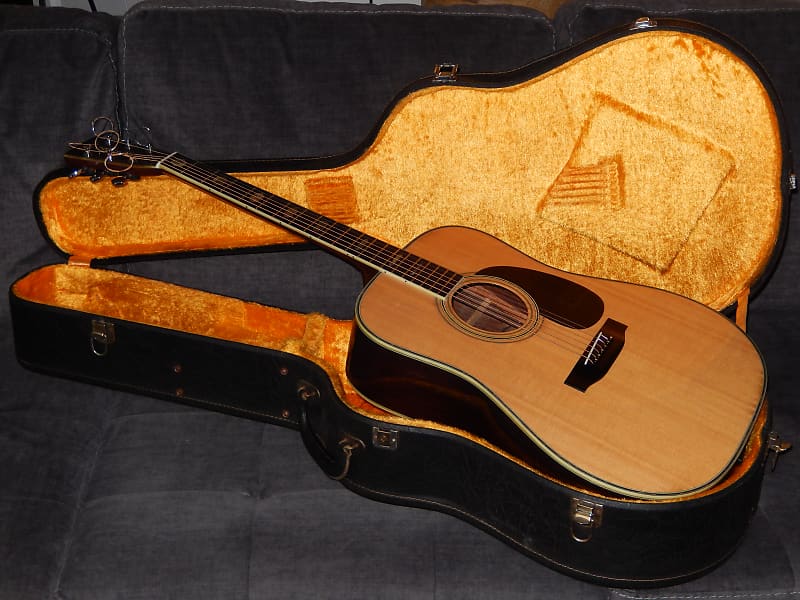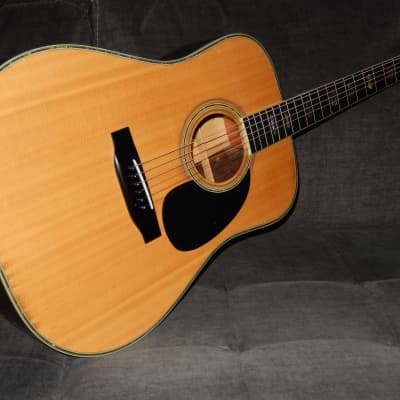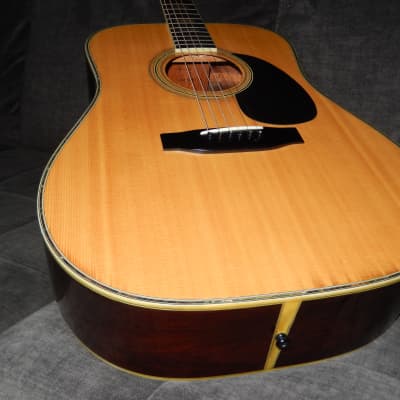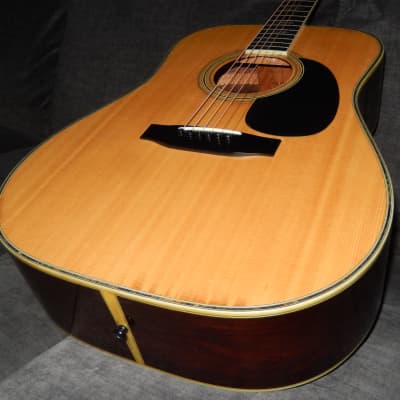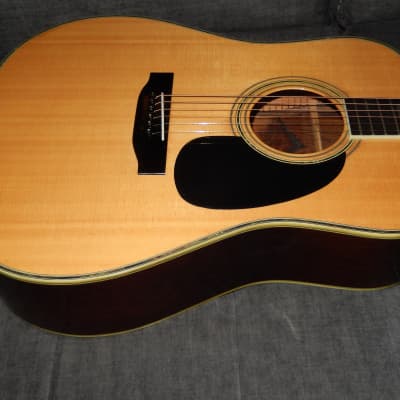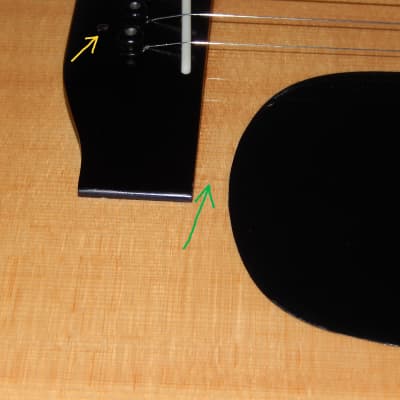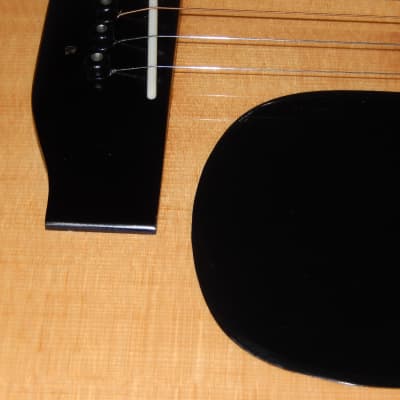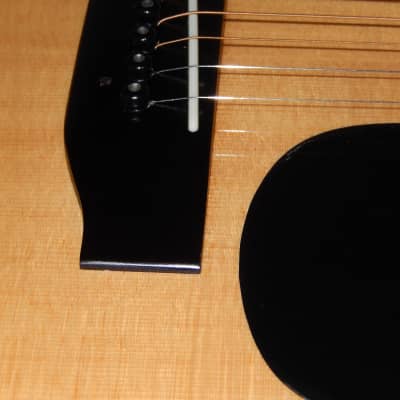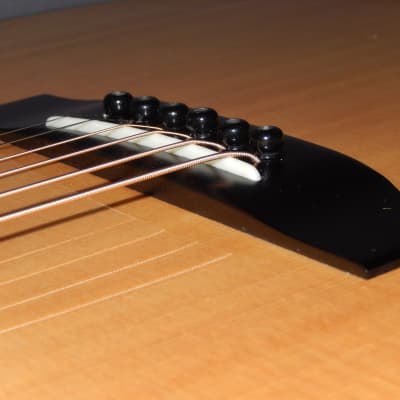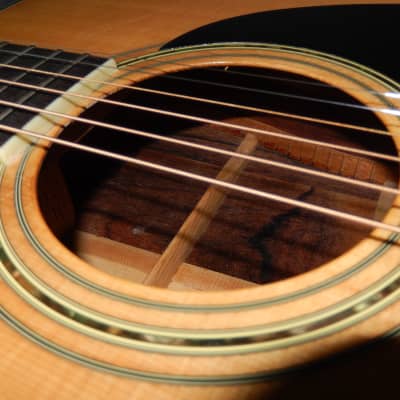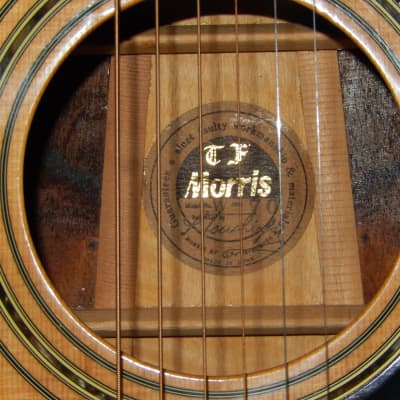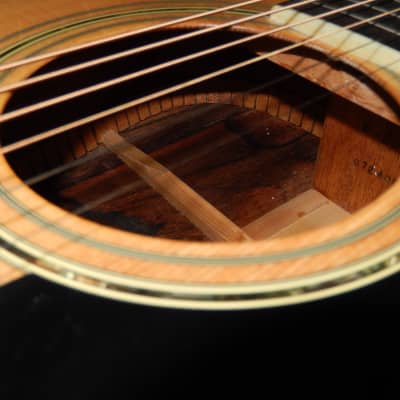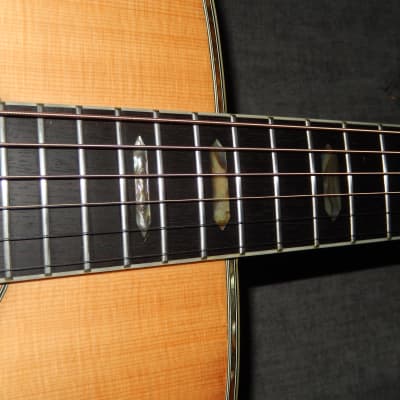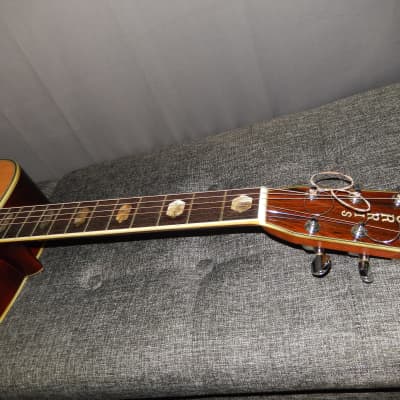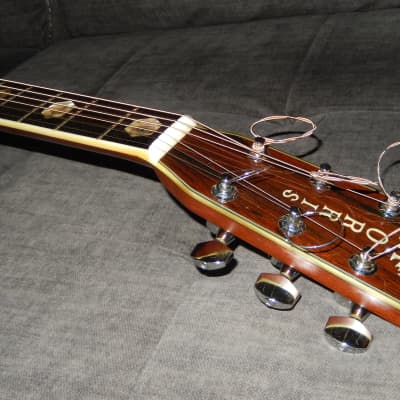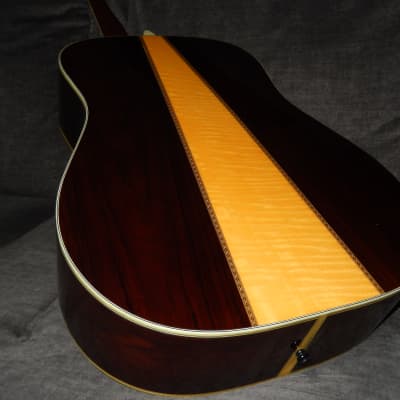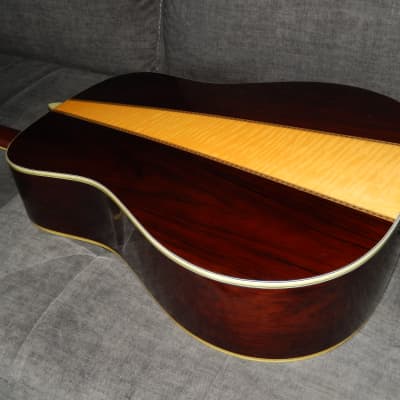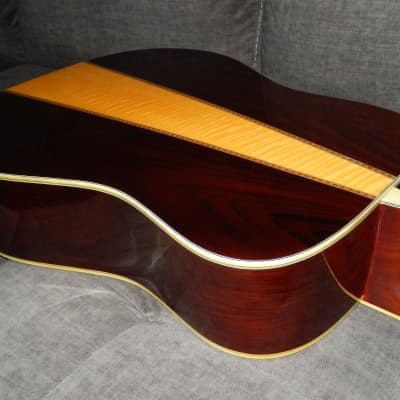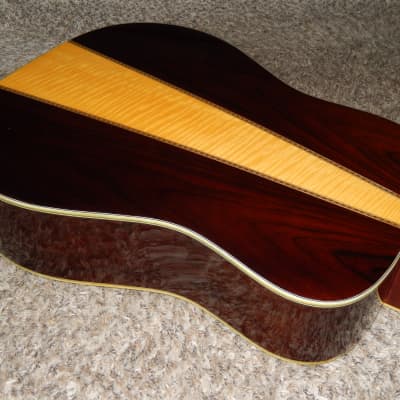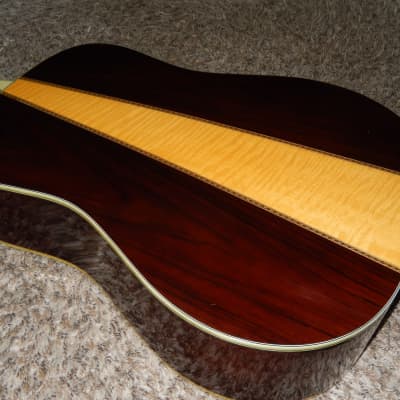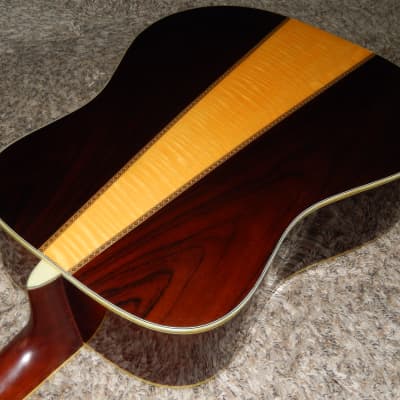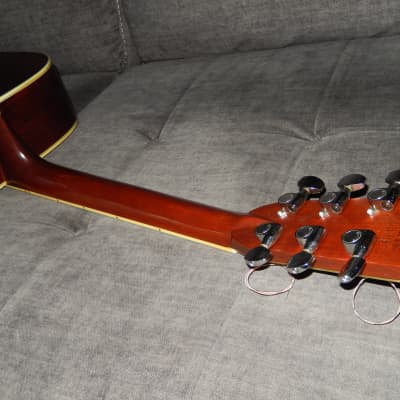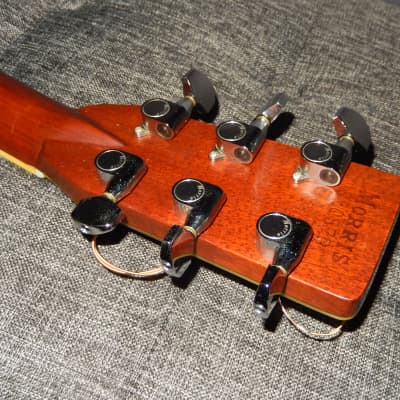Morris W70 acoustic guitar
Most acoustic guitar players around the world know that since late 1960s Japanese makers were creating wonderful “copies” of Martin, Gibson and Guild guitars. Many experienced players know that many of these “copies” sound better than the “originals”.
This guitar was handmade late1970s by best Morris luthiers at their Matsumoto workshop. It was a mid range model within Morris's lineup of that era. Yet it is truly fantastic instrument, easily challenging $5000+ acoustic guitars currently sold in USA.
Being priced 70 000yen in 1979 it was quite expensive instrument. If distributed in USA its price would have been at least $900.
The same construction and class brand new Japanese made guitars are priced minimum 350 000yen, which translates to at least $3500 in US distribution. Launched in 2018 (highly ornamented) Kazuo Yairi's limited 85th anniversary model was sold for 550 000 yen/piece.
As of today, if you wanted to order a brand new guitar made in Japan with similar woods, looks and construction it would cost you at least $2500. If in addition you would like it to have the same vintage sound the price would be at least $3500. It is not that difficult to find out what are the current prices of Japanese made acoustic guitars.
The construction and looks of this wonderful guitar are based on Martin D41 blueprint. I won’t however call it a “copy” of Martin D41. The word “copy” suggests a product of somewhat lower quality than the “original”, while this guitar can easily beat many brand-new Martin guitars.
It offers impressive volume and superb response. Its sound is ultra-rich. Basses are deep but very “clean”. Trebles are metallic but very sweet at the same time. All notes have their unique colors, all are super clear and super well separated. When chords/arpeggios are played guitar releases a bounty of overtones and harmonies. With its current action it plays ultra-easy.
Even though original tuning keys have lost a bit of their original luster and one can find few very small marks on its body , overall condition of this guitar can be described as " excellent for its age". The only cosmetic imperfections are tiny dent on the bridge behind pins E6&E5 and 1/2 inch long linear mark located between the bridge and pickguard. This is either scratch/dent or dent/crack in the finish. Guitar doesn’t have any structural problems. Its neck is straight and frets are leveled.
Specification:
Top: Thin plate of very tight grain Solid Spruce with reinforcing ring of wood glued underneath the sound-hole /Martin style X bracing with scalloped braces /ultra-light gloss finish
Back: Brazilian Rosewood/Chestnut/Brazilian Rosewood “laminates” /lacquer
Sides: Brazilian Rosewood “laminates” /lacquer
“Laminated” is quite unfortunate term regarding Japanese made guitars. These plates were made from 2 layers of solid wood glued together with natural resins. They were made so well that they performed as good as solid woods while being far less expensive in guitar production and far more resistant to cracking in regular use. In recent years many guitar makers around the world adopted a new term "semi-solid" to describe these plates.
Neck: Mahogany with 2-way truss rod
Fingerboard: Brazilian Rosewood
Nut width: 43mm
Scale: 655 mm
The action is set to 2.50 mm under E6 and 2.00 mm under E1, with still extra room on the saddle.
My posted for sale guitars are stored in climate-controlled vault already packed into shipping boxes, with loosen strings. Because the strings are loosened, they don’t pull the neck or soundboard, and the neck may relax (straighten more) and the soundboard flatten a bit, which may result with the string action being lower than my it was with my original settings and lead to buzzes and/or dead notes after guitar arrives to you. Such a change in neck curvature can also happen just because of vibrations during the shipment and/or temperature fluctuations. Therefore, you must be ready to make final action adjustment yourself and or have it done by professional. All that really needs to be done is the simple neck adjustment by using the truss rod (turning the truss rod counterclockwise will relief the neck and strings will move away from the frets).
THAT IS WHY TRUSS RODS ARE INSTALLED IN THE NECKS OF ACOUSTIC GUITARS!!!
This guitar will be shipped in used hard shell case in still good condition.
Some info related to this guitar
Moridaira (Morris Guitars)
Founded in 1967 by Toshio "Mori" Moridaira, the Moridaira factory produced high-quality guitars, including the infamous Morris badged guitar. Moridaira also produced badged guitars for Hohner including Coronado, Futurama, H.S. Anderson, Lotus (some) and Sakai.
The Morris Guitars company has been building quality handcrafted instruments in Nagano, Japan for a long time. Mr. Toshio Moridaira, the founder, was the first distributor in Japan to carry both Fender and Gibson lines. In 1964, due to his working relationship with Gibson, Mr. Moridaira was able to visit the Gibson factory in Kalamazoo, Michigan. An employee at Gibson nicknamed him “Mori” at that time.
In 1967, he founded the Morris Guitars company. He named it Morris, taken from the nickname given to him a while back. Morris produced copies of dreadnought and small jumbo models based on Martin and Gibson designs. Since then, Morris Guitars have enjoyed an outstanding reputation in Japan and other countries for making high quality guitars.
In 1974, Morris introduced their guitars at the NAMM show. In 1978, Morris introduced the Tornado line, thin body acoustic-electric guitars inspired by the Ovation design. Up until the early 80s, the U.S. market saw a variety of guitars that Morris imported from Japan.
In 2001, after a lengthy absence, Morris Guitars re-entered the U.S. market. They participate in the annual Winter NAMM Show in Anaheim, CA. Morris Guitars currently offer a wonderful line of fingerstyle guitars with a middle price range. Custom hand built models are also available. Today, Morris Guitars are played by some of the world’s finest fingerstyle guitarists. Our products are available through a small number of dealers here in the U.S.
The key to understand value of vintage Japanese guitars is to acknowledge galloping price inflation (devaluation of Japanese yen) during 1960s & 1970s. This inflation slowed down in 1980s.
During 1960s and most of 1970s model numbers of Japanese guitars were strictly interconnected with their prices in Japanese yen. By early 1980s and during following decades model numbers were no longer strictly associated with their prices. Some Japanese guitar makers introduced model names instead of model numbers. Others were still using model numbers with addition of letters and/or other symbols.
It is important to understand that two Yamaha GC10 guitars made 10 years apart are two instruments of totally different class. The same applies to any other Japanese maker/brand.
Any guitar priced 100 000 yen in 1970 (labelled usually as No10) would be priced 200 000 yen in 1975 (relabeled to No20 or 2000), 300 000 yen in 1977 (labelled as No3, No30 or 3000). Starting in 1977 Masaru Kohno introduced his new models No40 priced 400 000 yen and No50 priced 500 000 yen. By 1984 Kohno started using model names instead numbers and was raising their prices as he was pleased. The very top model 50 became model “Special”, and a decade later it became model “Maestro”. Naturally, all other Japanese guitar makers were doing the same pricing (labelling) upgrades.
Knowing all of that, you can bet on that Masaru Kohno No50 made in 1982 is practically the same grade instrument as Kohno No20 made in 1972, or Kohno no 30 made in 1975.
In 1970 the lowest Ryoji Matsuoka (all laminates) model was 10, followed by (solid top) models 15, 20, 25, 30, 40, 50, 60, 80 and (all solid woods) models 100 and 150. Models 60 and 80 were made with non-solid figured Brazilian Rosewood (double) b/s and top model 150 was the only one made with solid figured Brazilian Rosewood b/s.
In 1980 the lowest Matsuoka model was (all laminates) 20, followed by (solid top) models 30,40,50, 60 and all solid woods models 80,100,150 and 200. By 1990 the lowest Matsuoka model was M40 and the highest was M300. By 2010 the lowest Matsuoka model was M50 and the top model was M270.
You can bet that Ryoji Matsuoka model 50 from 1980 is of the same grade as model M100 from 2000, model 100 from 1980 is of the same grade as model M150 from 2000, model 150 from 1980 is of the same grade as M200 from 2000 and model 200 from 1980 is of the same grade as model M300 from 2000.
It is important to mention that if modern era luthiers are using 40+ years old woods to make an “all solid” wood classical guitar, its price is minimum $8000.
All vintage guitars made with Brazilian Rosewood are especially precious, including those made straight grain varieties and those with non-solid b/s.
Because response and tonal properties of Spruce soundboards are improving over time, long seasoned Spruces are far more precious than long seasoned Cedars.
It is not that very difficult to find out what are current prices of such guitars made by world’s leading luthiers.

